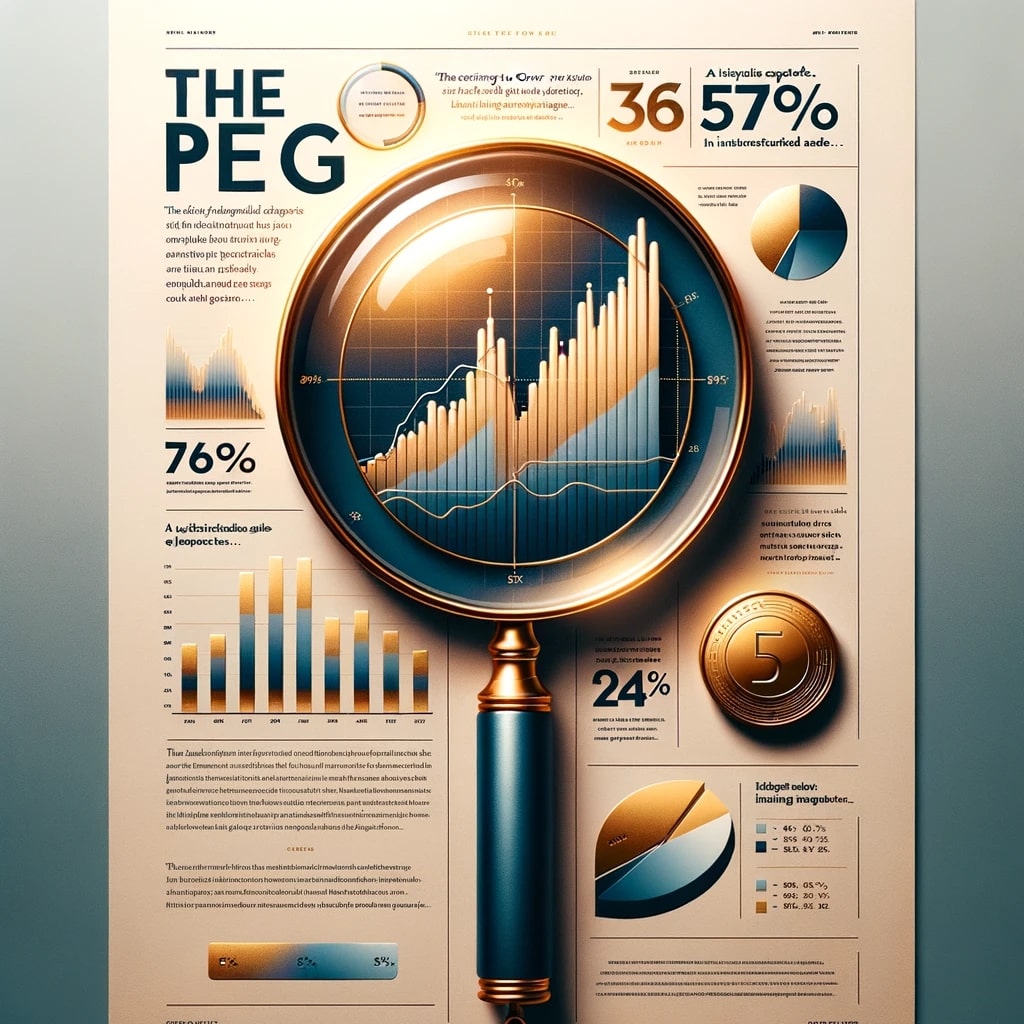From Past to Present: The Evolution of the PEG Ratio
In the corridors of the late 20th-century financial markets, the PEG ratio was frequently overshadowed by its elder sibling, the Price-to-Earnings (P/E) ratio—a comparatively straightforward valuation methodology. However, the need for a more granular stock valuation tool became paramount as global markets morphed, facing unprecedented shifts and challenges. Investors’ appetite for a metric that encapsulated value and growth led to the rising stardom of the PEG ratio. Today, its widespread adoption and preference testify to the relentless evolution and increasing sophistication embedded in modern-day investment analysis.
The Inner Workings: PEG Ratio as a Valuation Prism
Offering a kaleidoscopic viewpoint on stock valuation, the PEG ratio emerges as a beacon for investors navigating the turbulent waters of stock markets. Unlike the singular dimension of the P/E ratio, the PEG ratio’s multifaceted nature enables it to decipher undervaluation or overvaluation cues. A stock exhibiting a lower PEG ratio is typically an indicator of potential undervaluation, suggesting it might be ripe for investment. Conversely, a heightened PEG ratio could be a cautionary flag for overvaluation. By skillfully juxtaposing the traditional P/E ratio with a company’s projected earnings growth rate, astute investors can efficiently gauge if a stock’s current market price is harmonious with its envisaged growth trajectory.
PEG Ratio in Action: Illustrative Examples
Demystifying the PEG ratio is a straightforward exercise. To elucidate:
- Ascertain the P/E ratio of your target stock.
- Scrutinize the company’s earnings growth trajectory over a specified interval, typically spanning a year.
- Divide the previously obtained P/E ratio by this growth rate to unlock the PEG ratio.
For instance, consider Company A, brandishing a P/E ratio 20 and an optimistic earnings growth rate pegged at 10%. The resulting PEG ratio is 2. Contrarily, Company B, even with a steeper P/E ratio of 30, boasts a stellar 15% growth rate, translating to an identical PEG ratio 2. This comparative scenario underscores the PEG ratio’s prowess in illuminating relative value nuances across diverse stocks, each with its unique P/E ratios and growth forecasts.
The Global Lens: PEG Ratio in International Markets
The PEG ratio’s international acclaim is undeniable. It’s a universal yardstick, eagerly embraced by investors spanning continents—from the skyscrapers of New York to the bustling bazaars of Bangkok. Delving into a comparative analysis of varied financial hubs like the US, Europe, and Asia, we witness intriguing fluctuations in average PEG ratios. These variations serve as mirrors, reflecting diverse growth aspirations and distinct valuation paradigms across regions. A snapshot from Q1 2023, courtesy of FactSet data, illustrates this: the US markets averaged a PEG ratio of 1.5, European markets hovered around 1.3, while their Asian counterparts settled at 1.1.
The PEG Paradox: Strengths and Shortcomings
The PEG ratio, while a potent analytical tool, isn’t devoid of imperfections. Its core strength—merging the P/E ratio with anticipated earnings growth—also emerges as its Achilles’ heel. The ratio’s reliability is tethered to the accuracy of earnings growth predictions, a terrain often marred by uncertainties. Additionally, its formula may necessitate recalibrations when analyzing companies on the extremes—those witnessing skyrocketing growth or those grappling with dwindling earnings.
Riding the PEG Ratio Wave: Leveraging its Potential
Despite the inherent challenges, the PEG ratio’s allure is inescapable. When wielded astutely and in tandem with a spectrum of other metrics, it can metamorphose into a powerful compass for investors. It serves as a guide, illuminating paths towards more discerning, balanced, and insightful investment avenues.


